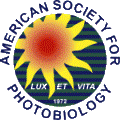Journal list menu
Export Citations
Download PDFs
Editorial
Invited Review
Molecular Regulation of UV-Induced DNA Repair
- Pages: 254-264
- First Published: 22 December 2014

UVB radiation causes formation of specific DNA damage photoproducts between pyrimidine bases. These DNA damage photoproducts are repaired by a process called nucleotide excision repair. When left unrepaired, UVB-induced DNA damage leads to accumulation of mutations, predisposing affected individuals to carcinogenesis as well as to premature aging. Regulation of nucleotide excision repair is an attractive avenue to preventing or reversing these detrimental consequences of impaired nucleotide excision repair. Here, we review recent studies on molecular mechanisms regulating nucleotide excision repair by extracellular cues and intracellular signaling pathways, with a special focus on the molecular regulation of individual repair factors.
Research Articles
The Efficient Photocatalytic Degradation of Methyl Tert-butyl Ether Under Pd/ZnO and Visible Light Irradiation
- Pages: 265-271
- First Published: 14 November 2014
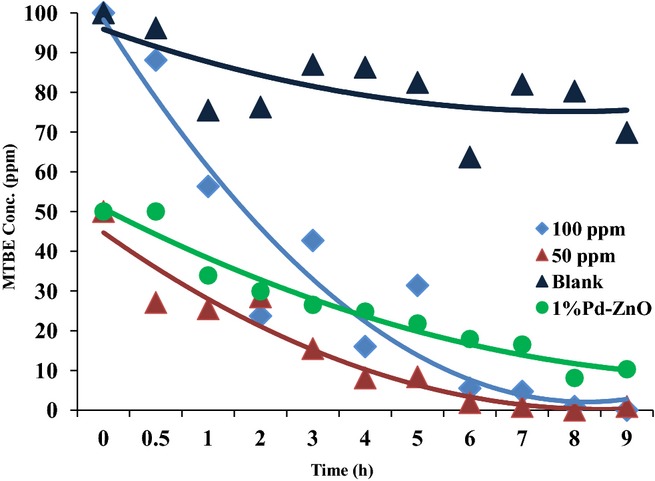
The photocatalytic degradation of aqueous MTBE solution was studied using zinc oxide as a photocatalyst. Complete MTBE removal was achieved within 9 h under visible light irradiation using ZnO particles. MTBE removal is attributed to the visible light excitation of the photocatalyst resulting in the generation of photoexcited electron/hole pairs. This method can be considered as an efficient and complete removal system of MTBE from water.
Unveiling the Triplet State of a 4-Amino-7-Nitrobenzofurazan Derivative in Cyclohexane
- Pages: 272-279
- First Published: 16 December 2014
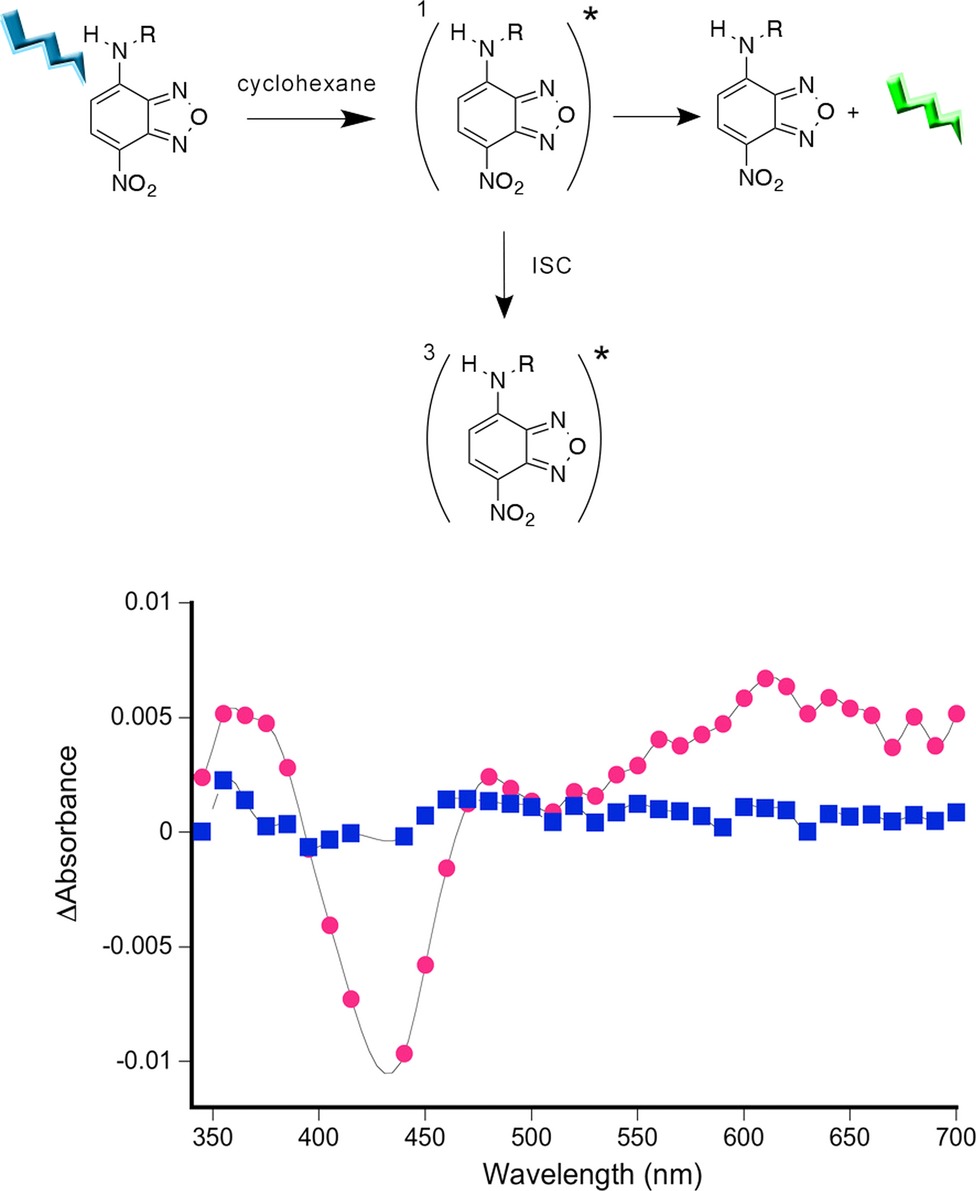
While NBD derivatives are very popular fluorogenic compounds and their first excited states are well characterized, no study had investigated the ability of these compounds to undergo intersystem crossing. As many other intramolecular charge transfer molecules, NBD derivatives present a triplet state in a nonpolar solvent such as cyclohexane.
Spectroscopic Properties of Morin in Various CH3OH–H2O and CH3CN–H2O Mixed Solvents
- Pages: 280-290
- First Published: 22 December 2014
Synthesis of Bi2WO6/Bi2O3 Composite with Enhanced Photocatalytic Activity by a Facile One-step Hydrothermal Synthesis Route
- Pages: 291-297
- First Published: 22 December 2014

Bi2WO6/Bi2O3 can be synthesized by a facile one-pot hydrothermal route with sodium oleate using a super big 200 mL Teflon-lined autoclave. The as-prepared composites possessed smaller band gap and higher visible-light responsive than the pure Bi2WO6. The as-prepared composites exhibited enhanced photocatalytic activity for the degradation of RhB under visible-light irradiation, which could be ascribed to their improved light absorption property and the reduced recombination of the photogenerated electrons and holes during the photocatalytic reaction.
Intramolecular Proton Transfer in 2-(2′-hydroxyphenyl)oxazolo[4,5-b]pyridine: Evidence for Tautomer in the Ground State
- Pages: 298-305
- First Published: 23 December 2014
Excited-State Multiple Proton Transfer Depending on the Acidity and Basicity of Mediating Alcohols in 7-Azaindole–(ROH)2 (R=H, CH3) Complexes: A Theoretical Study
- Pages: 306-314
- First Published: 07 January 2015
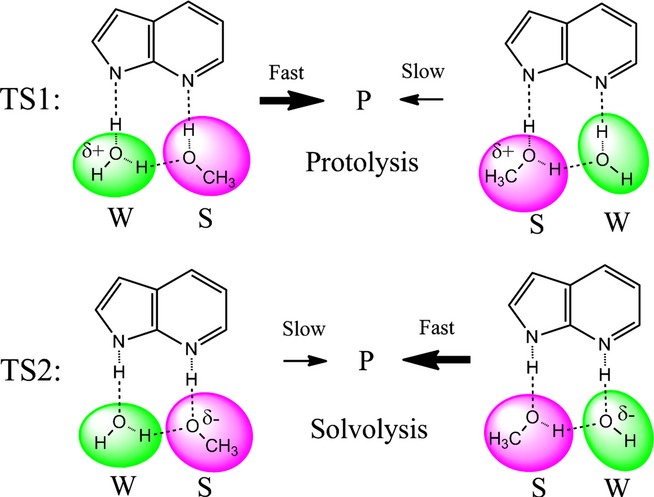
Both proton-donating and accepting abilities of alcohols in the H-bonded wire can accumulate to help proton transfer, and the strong acidity and basicity of the alcohols with relatively small structural changes in the wire have larger impacts on reducing the activation energies than those of alcohols that trigger proton transfer.
Improved Efficiency and Stability of Flexible Dye Sensitized Solar Cells on ITO/PEN Substrates Using an Ionic Liquid Electrolyte
- Pages: 315-322
- First Published: 05 December 2014

Flexible dye-sensitized solar cells (DSSCs) with enhanced stability, built on ITO/PEN substrates and using an ionic liquid (IL) electrolyte, have been developed. A 12 nm thick blocking layer, produced by atomic layer deposition, was used to reduce electron recombination, and a 1 μm thick TiO2 film sensitized with the hydrophobic MK-2 dye was used to improve charge collection and extraction. These flexible DSSCs exhibit comparable efficiency to those cells using a solvent based electrolyte plus significantly improved stability, with a <10% drop in performance after 1000 h aging at 60°C under continuous light illumination.
Photophysics of Acetophenone Interacting with DNA: Why the Road to Photosensitization is Open
- Pages: 323-330
- First Published: 21 November 2014

Using a combination of Molecular Dynamics and QM/MM modeling we have characterized stable interaction modes between acetophenone and DNA. The effects of the macromolecular environment on the acetophenone photophysics have been elucidated, confirming that it is still able to efficiently photosensitize DNA by energy transfer from triplet state. In particular this is due to the maintaining of the quasidegenerescence between the first two acetophenone triplet states that are moreover characterized by a high spin-orbit coupling with the ground state. Our work gives important insights in the triplet sensitization mechanism and on the effect of the environment.
Effects of Substituents on Synthetic Analogs of Chlorophylls. Part 4: How Formyl Group Location Dictates the Spectral Properties of Chlorophylls b, d and f
- Pages: 331-342
- First Published: 09 December 2014

The location of the formyl group at the perimeter of the chlorin ring has a profound effect on the position of the long-wavelength chlorin absorption band. Photophysical studies of synthetic formyl chlorins combined with DFT calculations and use of the tetrapyrrole four-orbital model have identified the molecular physical origin of the observed spectral shifts.
Response of Growth and Photosynthesis of Emiliania huxleyi to Visible and UV Irradiances under Different Light Regimes
- Pages: 343-349
- First Published: 16 December 2014

We grew calcifying Emiliania huxleyi under indoor constant light and fluctuating sunlight regimes with or without UV radiation. The growth rate was the highest under the indoor, significantly decreased under fluctuating outdoor solar radiation, especially in the presence of UV radiation. When the UV-exposed cells were regrown under indoor light, the growth recovered slowly, which were predicted to take a month to catch the previous indoor growth rate. The results indicate that the cells, while growing under fluctuating light, require additional energy and resources for maintaining photosynthetic machinery and synthesizing UV-absorbing compounds at the cost of decreased growth rate.
Measurement of Photosynthesis Using PAM Technology in a Purple Sulfur Bacterium Thermochromatium tepidum (Chromatiaceae)
- Pages: 350-358
- First Published: 02 January 2015
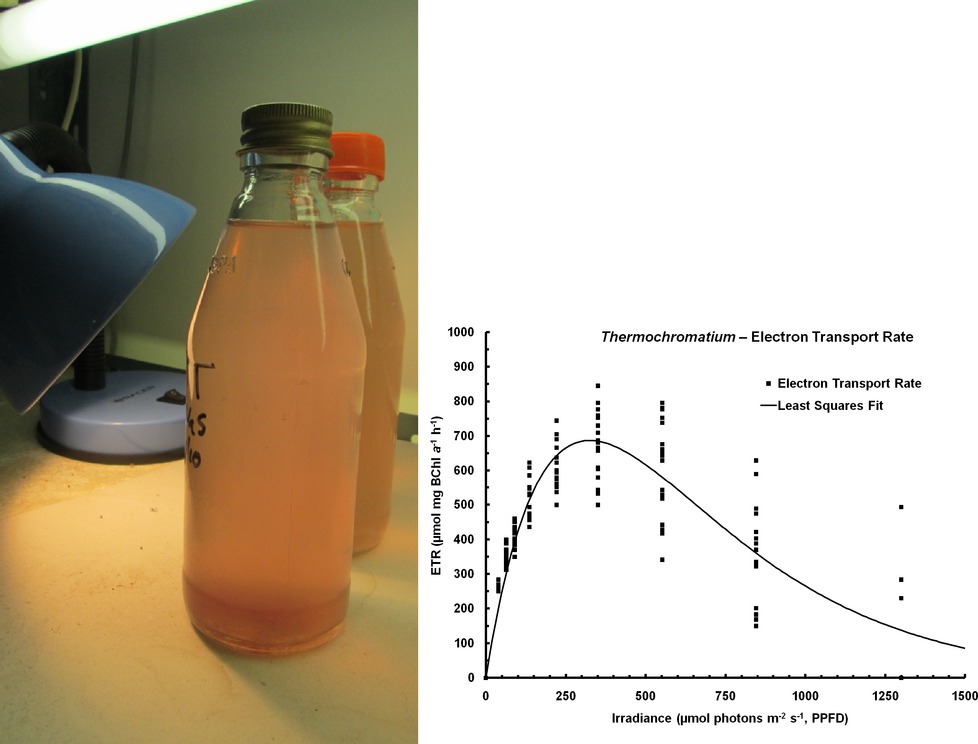
Blue-Diode PAM Fluorescence technology can be used to monitor photosynthetic electron transport in Purple Sulfur Photosynthetic Bacteria. This is an important advance for bacterial photosynthetic studies because now photosynthesis of both purple sulfur and purple nonsulfur photosynthetic bacteria can be easily monitored without recourse to 14C methods in the laboratory and in lakes and microbial mats.
Effects of Ultraviolet Radiation (UVA+UVB) and Copper on the Morphology, Ultrastructural Organization and Physiological Responses of the Red Alga Pterocladiella capillacea
- Pages: 359-370
- First Published: 28 November 2014

This study shows that both ultraviolet radiation (UVR) and copper (Cu) have deleterious effects on the macroalgae Pterocladiella capillacea, which toxicity led to drastic cellular changes and failure of protective mechanisms. Although UV radiation demonstrated to be more harmful than Cu, our results clearly indicate a synergistic interaction between the two stressors.
Interphotoreceptor Retinoid-Binding Protein Protects Retinoids from Photodegradation
- Pages: 371-378
- First Published: 06 January 2015
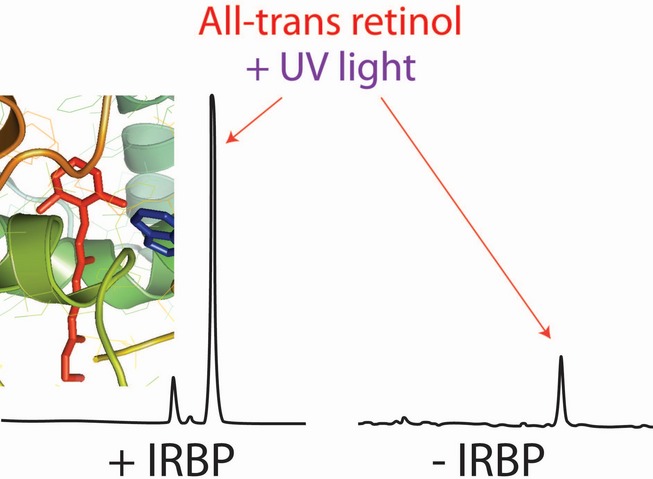
Visual cycle retinoids are highly susceptible to UV-light-mediated photodegradation. However, interphotoreceptor retinoid-binding protein (IRBP), the most abundant protein component of the extracellular matrix surrounding the photoreceptors, affords significant photoprotection. This reveals a novel and important role of IRBP in protecting the retina from toxic retinoid photodegradation products.
Nobiletin, a Polymethoxy Flavonoid, Reduced Endothelin-1 Plus SCF-Induced Pigmentation in Human Melanocytes
- Pages: 379-386
- First Published: 09 December 2014

Nobiletin inhibited ET plus SCF-triggered production of melanin and expression of MITF/tyrosinase in human melanocytes and a three-dimensional human epidermal model. This is the first research emphasizing the antimelanogenesis potential of nobiletin isolated from citrus and its possibility of beneficial applications in the cosmetic industry.
Thioredoxin Reductase Activity may be More Important than GSH Level in Protecting Human Lens Epithelial Cells against UVA Light
- Pages: 387-396
- First Published: 15 December 2014

Exposure of cultured human lens epithelial cells (LECs) to UVA light (25 J cm−2), or pretreatment of the cells with an inhibitor (1-chloro-2,4-dinitrobenzene) of thioredoxin reductase (TrxR), produced no damaging cellular effects. However, a combination of the two challenges produced substantial loss of LECs and cell damage, including death (arrows) and threadlike structures (arrowheads). In contrast, depletion of reduced glutathione (GSH) by L-buthionine-(S,R)-sulfoximine, combined with exposure to UVA light, produced only a slight cell loss, with no apparent morphological effects. The results demonstrate an important role for TrxR activity, possibly more so than GSH level, in defending the lens epithelium against UVA light.
Growth under Visible Light Increases Conidia and Mucilage Production and Tolerance to UV-B Radiation in the Plant Pathogenic Fungus Colletotrichum acutatum
- Pages: 397-402
- First Published: 23 December 2014

Light conditions influence the development of the plant pathogenic fungus Colletotrichum acutatum. Exposures to visible light during fungal growth increased production of conidia and mucilage as well as conidial tolerance to UV. Conidia embedded in the mucilage on sporulating colonies were more tolerant of UV than conidia in suspension that were washed free of mucilage.
Low Level Light Therapy Modulates Inflammatory Mediators Secreted by Human Annulus Fibrosus Cells during Intervertebral Disc Degeneration In Vitro
- Pages: 403-410
- First Published: 02 January 2015
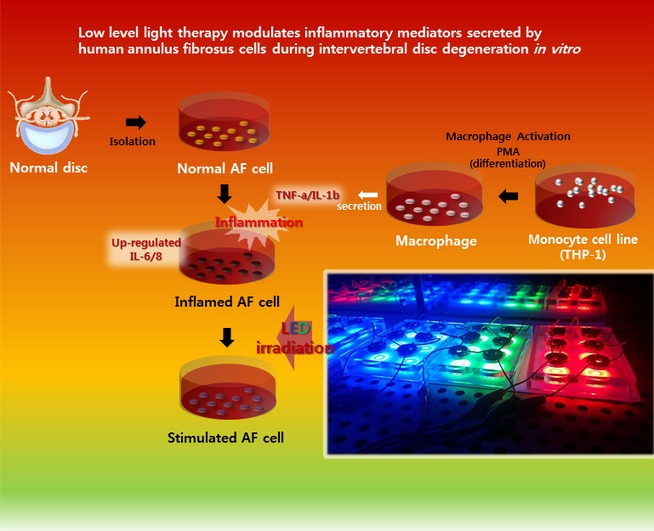
The aim of this study is to mimic the inflammatory microenvironment and investigate the anti-inflammatory effect of LLLT at a range of wavelengths (405, 532 and 650 nm) on the AF treated with macrophage-like THP-1 cells conditioned medium (MCM) containing proinflammatory cytokines and chemokines. AF cells exposed to MCM secreted significantly higher concentrations of IL-6, IL-8, IL-1β and TNF-α. LLLT markedly inhibited secretion of IL-6 at 405 nm in a time-dependent manner. Level of IL-8 was significantly decreased at all wavelengths in a time-dependent manner. We showed that MCM can induce the inflammatory microenvironment in AF cells and LLLT selectively suppressed IL-6 and 8 levels.
Low-level Laser (Light) Therapy Increases Mitochondrial Membrane Potential and ATP Synthesis in C2C12 Myotubes with a Peak Response at 3–6 h
- Pages: 411-416
- First Published: 01 December 2014
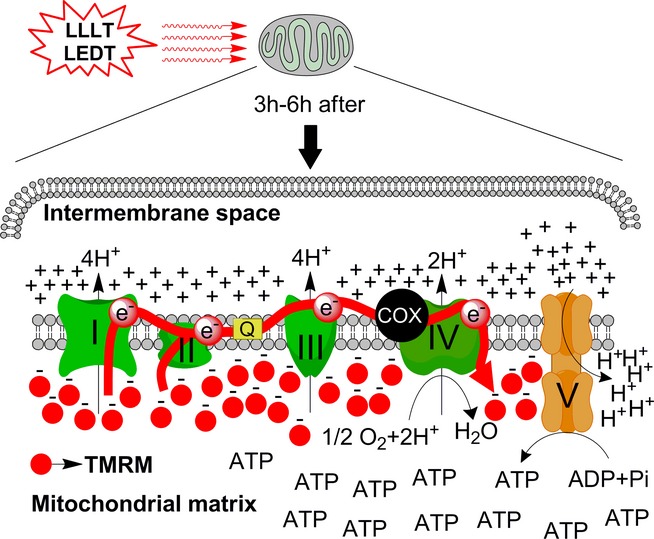
Mechanism of action of LLLT or LEDT on mitochondria in muscle cells. There is an increased flux of electrons through all the complexes of the electron transport chain, increased pumping of H+, increased synthesis of ATP and increased mitochondrial membrane potential as shown by TMRM fluorescence. The result is that muscles can perform much more work when light is delivered 3–6 h before exercise.
Application of CdTe/ZnSe Quantum Dots in In Vitro Imaging of Chicken Tissue and Embryo
- Pages: 417-423
- First Published: 05 December 2014

CdTe/ZnSe core/shell quantum dots (QDs) were prepared using microwave irradiation with different temperatures which is a very easy and less time-consuming method. The QDs were characterized by spectrofluorimetry, TEM, X-ray fluorescence analysis and Dynamic Light Scattering measurement. A blueshifting of the emission was found when ZnSe was deposited on CdTe QDs. All the QDs were able to visualize in in vitro imaging of chicken tissue and embryo and the QDs prepared at 100°C showed the best result.
Influence of Trans Fat on Skin Damage in First-Generation Rats Exposed to UV Radiation
- Pages: 424-430
- First Published: 02 January 2015

Metabolism of trans fat by COX and LOX: The dietary intake of trans fat favors the synthesis of biologically active prostanoids produced during inflammatory processes. After ultraviolet radiation exposure, trans fat supplementation, which is rich in trans fatty acids (TFA), increases the skin thickness, reactive species generation and decreases the skin antioxidant defenses.
Ultraviolet Index and Location are Important Determinants of Vitamin D Status in People with Human Immunodeficiency Virus
- Pages: 431-437
- First Published: 14 November 2014
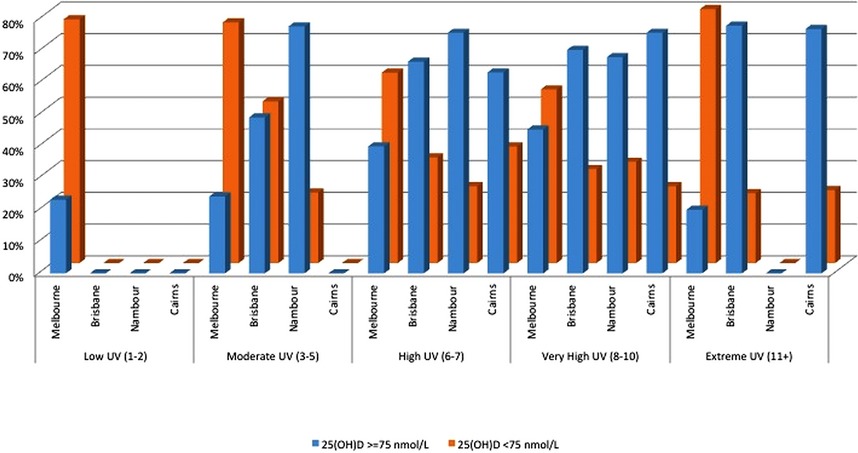
Low vitamin D is commonly found in people with HIV. This figure presents the unadjusted proportions of people with 25(OH)D <75 nmol L−1 grouped by UV index categories and the four different study locations in Australia [Cairns (latitude 17°S), Nambour (27°S), Brisbane (28°S) and Melbourne (38°S)]. In this study, we describe these and other factors contributing to serum 25(OH)D levels in people with HIV in Australia. Antiretroviral therapy was also associated with 25(OH)D <75 nmol L−1 which appeared to be modified by cholesterol and warrants further exploration in future studies.
Minimum Exposure Limits and Measured Relationships Between the Vitamin D, Erythema and International Commission on Non-Ionizing Radiation Protection Solar Ultraviolet
- Pages: 438-449
- First Published: 18 November 2014

The relationship between vitamin D dose and the International Commission on Non-Ionizing Radiation Protection (ICNIRP) UV exposure is studied from measurements made in Southern Queensland, Australia. The measurements take into account all weather and atmospheric conditions including a major continental dust storm event (NASA MODIS Terra image, 23 September 2009). Personal minimum exposure guidelines for the optimal production of vitamin D are presented for each of the internationally recognized UV index ranges relative to the received ICNIRP exposure. The measured data show that the healthy production of vitamin D can be maintained at subtropical latitude without exceeding ICNIRP exposure guidelines.
Special Issue In Honour of James Cleaver
Introduction
A Tribute to the Extraordinary Career (1964-present) of James Edward Cleaver
- Pages: 450-451
- First Published: 06 March 2015
Special Issue Invited Reviews
Forty Years of Research on Xeroderma Pigmentosum at the US National Institutes of Health
- Pages: 452-459
- First Published: 15 September 2014

James Cleaver's 1968 report of defective DNA repair in patients with xeroderma pigmentosum (XP) inspired scientists at the National Institutes of Health to initiate long-term studies of patients with XP and related disorders. These have led to a better understanding of the role of DNA repair in protection from sunlight-induced cancer of the skin and eyes, in maintaining the integrity of the nervous system and in human development. XP serves as a model of the effectiveness of sun protection and of oral retinoids in prevention of skin cancers.
Beyond Xeroderma Pigmentosum: DNA Damage and Repair in an Ecological Context. A Tribute to James E. Cleaver
- Pages: 460-474
- First Published: 14 November 2014

Sunlight is one of the most ubiquitous hazards for life on Earth. Although some aspects of solar radiation are beneficial (e.g. photosynthesis, vision, vitamin D synthesis), the ultraviolet B (UVB) component causes substantial damage to DNA resulting in debilitating and lethal effects. All organisms are capable of repairing DNA photoproducts and repair pathways are remarkably similar. While DNA repair research often focuses on human diseases and the development of cancer; solar DNA damage is also an important component of ecosystem health and stability. This review provides an overview of DNA repair in non-mammalian taxa relative to ambient UVB stress.
Development of Effective Skin Cancer Treatment and Prevention in Xeroderma Pigmentosum
- Pages: 475-483
- First Published: 07 November 2014

Xeroderma pigmentosum is a genetically heterogeneous recessively inherited disease associated with defective cellular responses to damage induced in DNA by sunlight. Most patients develop numerous skin cancers in sun-exposed sites. Hundreds, or even thousands of such tumors may develop, and metastatic spread of these lesions is the leading cause of death, often at an early age. We have now developed an effective treatment (Figure), administered before most clinically manifest tumors arise, which, combined with sun protection, prevents development of almost all skin cancers in patients with xeroderma pigmentosum. The remainder can readily be identified and excised separately.
Special Issue Research Articles
Xeroderma Pigmentosum in the United Kingdom
- Pages: 484-485
- First Published: 19 June 2014
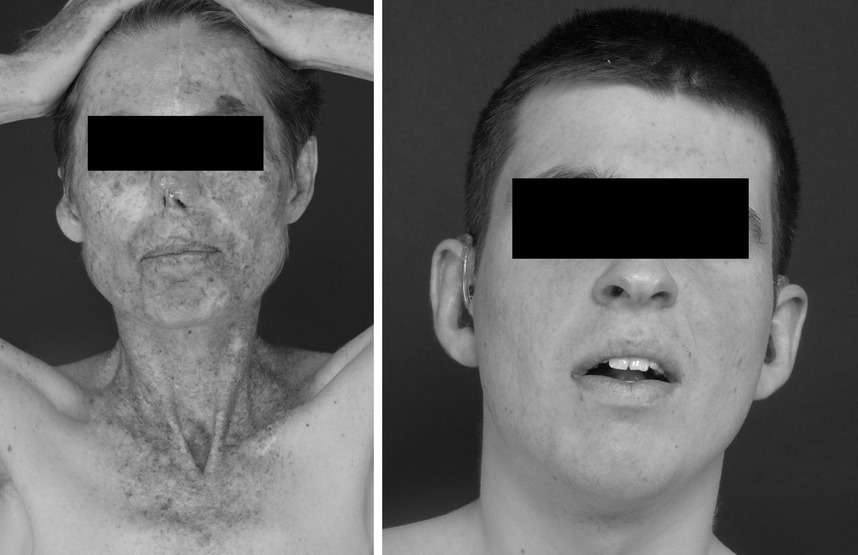
Early diagnosis and rigorous protection from daylight can completely prevent the skin problems in XP. Patient XP59BR (left) has had poor protection from daylight and has developed many skin cancers. In contrast, patient XPJCLO was diagnosed in his first year of life, has been rigorously protected from sunlight and has not developed any significant skin lesions. Curiously, despite having similar mutations in the XPD gene, XP59BR has no severe neurological problems, whereas XPJCLO has shown features of neurological degeneration since the age of 2. Photographs published with consent of patient or their family.
Interspecific Variation in the Repair of UV Damaged DNA in the Genus Xiphophorus as a Factor in the Decline of the Rio Grande Platyfish
- Pages: 486-492
- First Published: 08 October 2014

Geographical distribution of 26 species of the genus Xiphophorus with three northern species is highlighted. The three species comprising the Rio Grande Platyfish are the only Xiphophorus listed on the IUCN Red List of Threatened Species and this clade as a whole displays significantly reduced DNA repair compared to the other species in the genus.
Regulation and Disregulation of Mammalian Nucleotide Excision Repair: A Pathway to Nongermline Breast Carcinogenesis
- Pages: 493-500
- First Published: 13 November 2014
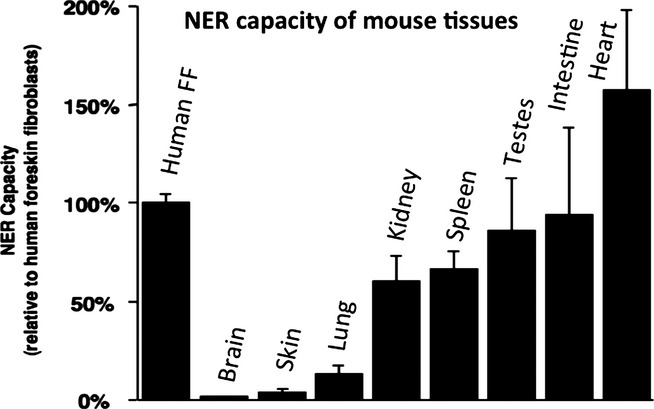
We have shown profound variation in NER (Nucleotide Excision Repair) capacity in humans, between cell-types and during carcinogenesis. As NER is intimately related to both replication and transcription, it shows a narrow range of functional viability. NER activity and gene expression are epigenetically regulated, although this epigenetic modulation is disregulated during sporadic breast carcinogenesis. We now demonstrate differences in NER capacity in eight adult mouse tissues, including a complete lack of activity in brain, and place this result into the context of our previous work on mouse extraembryonic tissues, normal human tissues and sporadic early stage human breast cancer.
Concluding Note
A bright Quantum of Time in the Cleaver Laboratory; a Tribute and Retrospective
- Pages: 501-504
- First Published: 06 March 2015




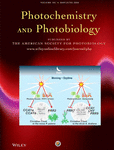

 ), (2) 80% CH3OH (
), (2) 80% CH3OH ( ), (3) 60% CH3OH (
), (3) 60% CH3OH ( ), (4) 40% CH3OH (
), (4) 40% CH3OH ( ); (B) λex = 365 nm; (1) 100% CH3CN (
); (B) λex = 365 nm; (1) 100% CH3CN ( ), (2) 90% CH3CN (
), (2) 90% CH3CN ( ), (3) 70% CH3OH (
), (3) 70% CH3OH ( ), (4) 50% CH3OH (
), (4) 50% CH3OH ( ).
).
![Intramolecular Proton Transfer in 2-(2′-hydroxyphenyl)oxazolo[4,5-b]pyridine: Evidence for Tautomer in the Ground State](/cms/asset/db141383-d636-4e76-bda8-333ce8e2909c/php12411-toc-0001-m.jpg)

